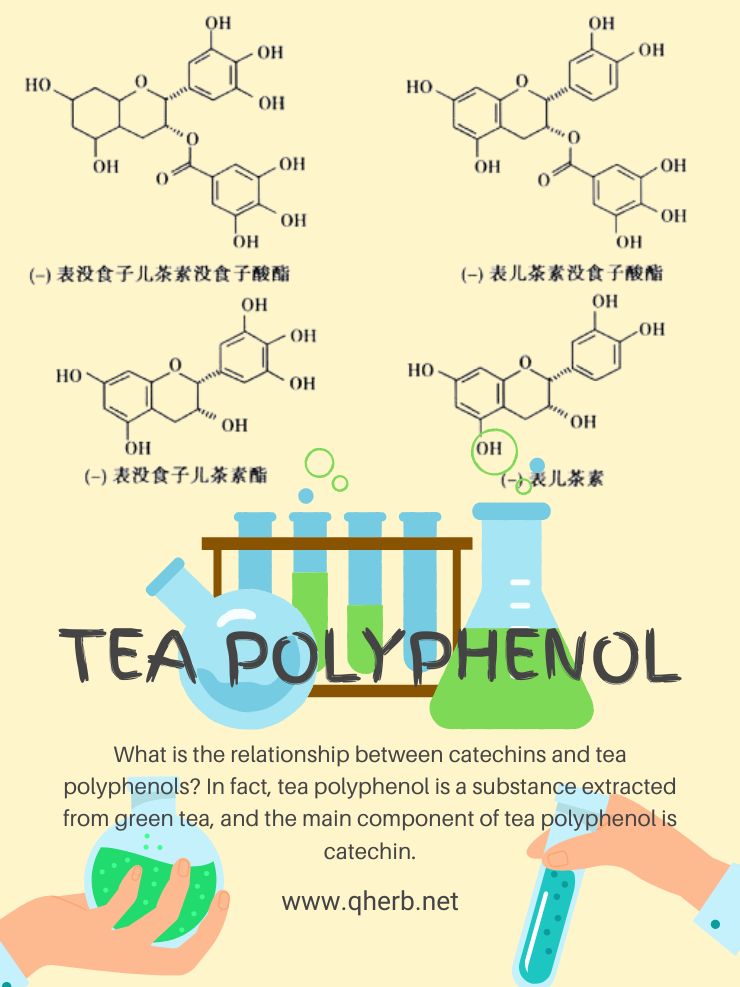What is Tea Polyphenol?
Tea polyphenol (TPs) is a class of polyhydroxyphenols and main chemical components in tea, also known as “tea tannins.” They are yellowish to brownish-yellow crystals or powders. The content in tea is generally 18-36% (dry weight).
The main components of tea polyphenol
The main components of tea polyphenols include flavonols, flavonoids, tea pigments, and phenolic acids. Flavanols catechins are the most important, accounting for about 70-80% of the total amount of polyphenols. Except for phenolic acid, other compounds have 2-phenyl-4H-chromene as the main body. The basic structure so collectively referred to as flavonoids.
The solubility of flavonoids varies significantly due to their different structures, so the solubility of tea polyphenols varies among other types. However, tea polyphenols generally are readily soluble in ethyl acetate, acetone, methanol, ethanol, and water, slightly soluble in oil, and insoluble in petroleum ether, benzene, and chloroform.
Properties of tea polyphenol
Tea polyphenols have phenolic hydroxyl groups in their molecules, which can dissociate H+, so they are acidic. Tea polyphenols are easily oxidized, especially in an aqueous solution or polyphenol oxidase. The phenolic hydroxyl is dissociated, generating oxygen anion, further losing electrons, and producing o-quinone, which can seize hydrogen from other substances and be reduced to phenol and can also polymerize to produce the reddish-brown polymer.
Tea polyphenols have phenolic hydroxyl groups in their molecules, which can dissociate H+, so they are acidic. Tea polyphenols are easily oxidized, especially in an aqueous solution or polyphenol oxidase. The phenolic hydroxyl groups are dissociated to generate oxygen anions, further lose electrons, and create o-quinone, which can take hydrogen from other substances and be reduced to phenols. Polymerization can occur to produce reddish-brown polymers.
Tea polyphenol has an astringent, bitter taste, and strong astringency. They are the main substances that make up the astringent taste of tea soup and produce saliva and sweetness. Astringency is an essential sensory property of tea soup taste and an important factor affecting tea quality and consumer acceptance.
Therefore, tea polyphenol significantly contributes to tea taste and is closely related to taste concentration. Moreover, it is easily oxidized to form tea pigments, the main components of tea soup color.


